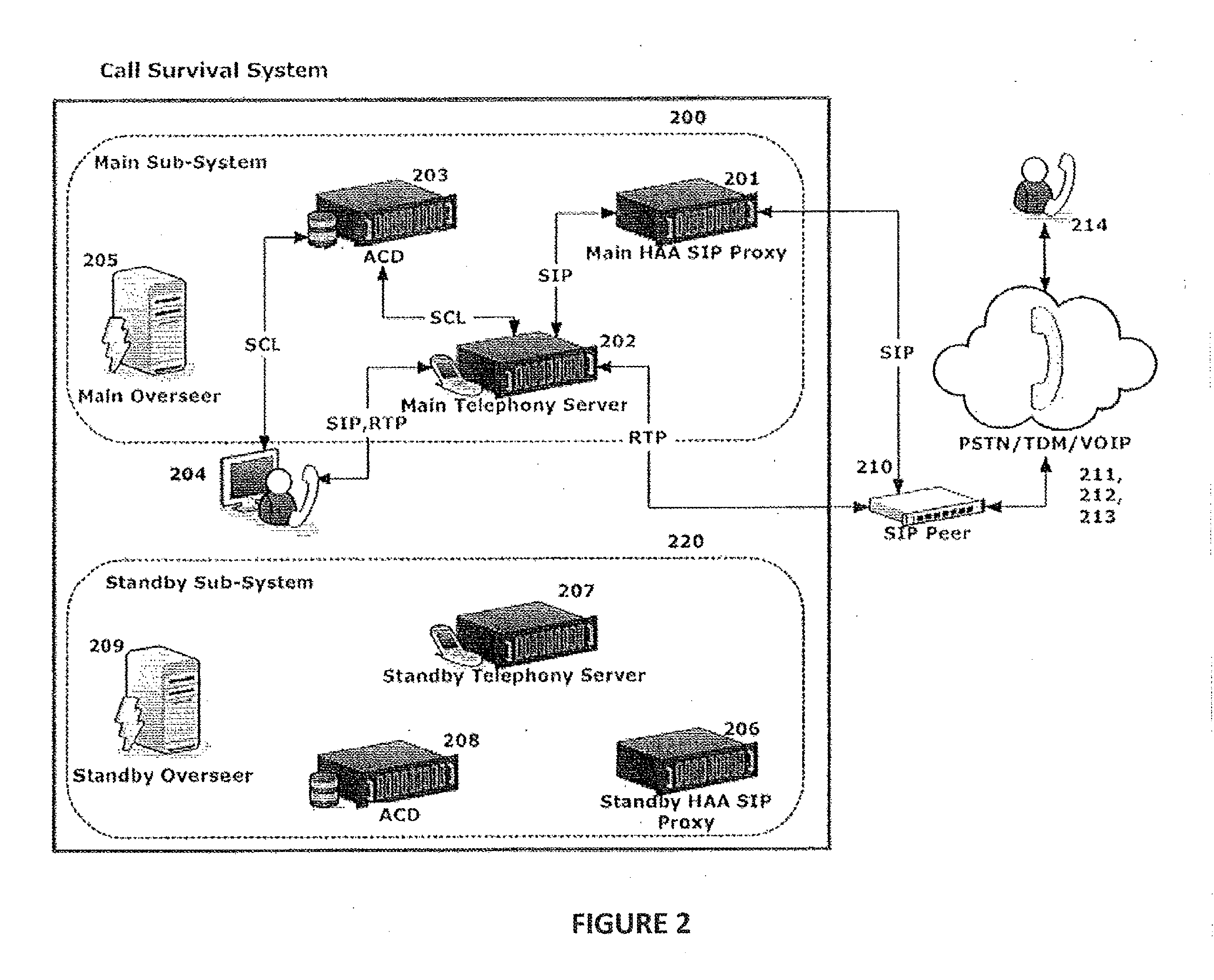Home › Forums › HAast (High Availability for Asterisk) › General › Patented call survival add-on › Reply To: Patented call survival add-on
Many call continuity solutions don’t work in a real-life Asterisk HA context. Most HA solutions attempt to maintain in progress calls by adding SIP devices in front of SIP devices. See this posting for a detailed discussion of how call survival can work with Asterisk/SIP: https://telium.io/topic/call-continuity-survival-on-failover/
There is one small company that claims to offer HA call survival (using their “patented” methodology). If you look closely at their patent (image reproduced below) you will see that all they have done is place a SIP proxy in front of each PBX, plus a “sip peer” in front of the SIP proxies:

So, will their ‘patented’ technology keeps calls up in case of:
- Failure of SIP proxy? No
- Failure of “SIP peer”? No
- Asterisk failing to bridge calls? No
- Power failure? No
- Loss of internet service? No
- Failure of router/firewall? No
- etc…
Making things even worse, placing a new single point of failure (the proxy, or “sip peer”) in front of an existing single point of failure (the PBX) doesn’t create HA – it just creates two single points of failure! You now have to create an HA solution for your SIP Proxy as well. This type of call “survival solution” solution only works in the most simplistic scenario, like the Asterisk box powering off and everything else continuing unaffected. Real life scenarios like trunk failures, power failures at the data center, firewall failures, etc. make such a call survival solution worthless.
Some companies attempt to keep RTP streams without SIP continuity; however, there are many reasons that SIP dialogs may occur while a call is in progress and if they don’t handle SIP then the RTP may drop. Many engineers new to SIP/RTP make this mistake – there are lots of details to consider here.
HAast OEM edition transitions calls between nodes without placing another device in front of either PBX. HAast integrates deeply with Asterisk to ensure calls don’t drop, queues re-populate, call recording resumes, etc. The issue is not as simple as just keeping an RTP stream up. HAast takes responsibility for transitioning the calls, rebuilding the Asterisk state, and transparently allow the peers to remain in full (SIP and RTP) contact.

